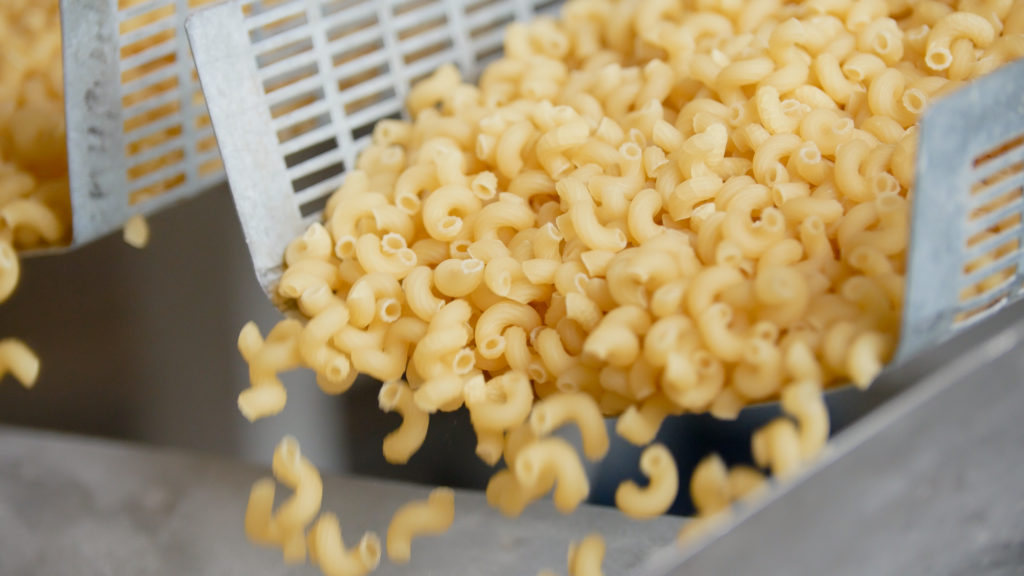
Food and beverage companies dealt with a ton of adversity in 2020. Between consumer panic buying, surges in demand for products with a long shelf-life and the shuttering of the foodservice industry, food and beverage manufacturers have been forced to adapt quickly or risk going out of business.
In December, we hosted a webcast that focused on the ways companies can utilize real-time data to overcome some of the food and beverage industry challenges that emerged over the past year. Below, we highlight some of these challenges and discuss the way access to good information can help manufacturers streamline operations to make better business decisions in 2021.
Challenges Facing Food and Beverage Manufactures in 2020
While most of the challenges listed below are inherent to the food and beverage industry, many have been exacerbated by the pandemic. Challenges like changing regulations, sustainability and managing waste are always critical issues and must be dealt with to ensure success. In this post, however, we focus on three major food and beverage industry challenges in 2020.
1. Huge Shifts in Consumer Demand
Consumer preferences are always changing, but the events of the past year have created shifts in buying habits that most of the industry was not prepared for. Prior to 2020, consumers had been trending toward products that appeared in the outside perimeter of the grocery store, where fresh foods like fruits, vegetables, dairy, meat and fish are typically located.
The COVID-19 pandemic regressed this trend as consumers began stockpiling products that were familiar and shelf-stable. Pasta, soup and pre-packaged pantry items surged in demand and food manufacturers were left looking for ways to increase production amidst a global pandemic that affected the availability of labor and the supply chain.
2. Product Shortages
In 2020, manufacturers faced shortages in materials ranging from international ingredients to packaging supplies. Difficulties in world-wide shipping and distribution meant that manufacturers who relied on materials from global suppliers were left having to change formulas, recipes and packaging to accommodate these shortages.
3. Long-Term Economic Disruption
As the pandemic continues into the new year, it’s clear that some of the consumer and manufacturing changes that came about as a result of the coronavirus and world-wide lockdowns may be here to stay. One of these changes is the economic impact on consumers who have lost their jobs or are no longer making as much money as they did pre-pandemic. The lack of disposable income amongst consumers means that manufacturers who produce non-essential food and beverage items are being greatly impacted. As prices for food continue to rise globally, consumers have less money to spend on nice-to-have items.
Utilizing Real-Time Data for Success in 2021
The key to success for food and beverage manufacturers is access to good information. Businesses that are armed with real-time data and accurate information can make better decisions and manage growth. To mitigate the challenges of the past year, successful food and beverage manufacturers harness good data to do the following:
1. Keep Production on Track
With ingredients in short supply and staff health and safety crucial for operations, it’s tough to maintain efficient production. Business leaders must have the tools in place to shift operations based on ingredient changes, quality concerns and staffing shortages.
When leaders are armed with good data, these operational shifts are easier to manage and accommodate. Reallocating employees if someone falls ill based on production or work orders, for example, helps minimize disruption on the shop floor. Ensuring the quality of alternative ingredients by measuring and recording every item that enters your facility addresses consistency issues and allows for ingredient adjustments if a new product variation needs to be made.
2. Accommodate for Changes in the Supply Chain
Food and beverage manufacturers who found success in 2020 were able to adjust their operations to accommodate abrupt changes in the supply chain. To do this, many were forced to switch up their suppliers, packaging and distribution channels. With access to good data from across their businesses, these manufacturers had the ability to create an alternative production plan and accommodate their operations based on these changes.
In terms of demand and planning, for example, manufacturers who have clear visibility into their operations can create effective job scheduling based on supplier delivery dates and raw material availability. When it comes to procurement, having visibility and control of manufacturing, warehousing, distribution and vendor communication processes helps manufacturers ensure all elements of the supply chain are taken care of and accounted for, regardless of where disruptions in the chain occur.
3. Better Manage Cash Flow, Financials and Planning
Being able to manage the growth of your company is necessary to ensure its success. With visibility into your true financials, you can make decisions based on good information so that your business can run in a more efficient and profitable way and improve working capital.
Ensuring that your business is diverse enough to stay afloat during times of uncertainty is difficult without accurate and timely information. By having the tools in place to manage multi-company finances and operations and track costs to better understand profitability, leaders can make better business decisions and manage growth.
Leading food and beverage manufacturers turn to Enterprise Resource Planning (ERP) software to gain insight, visibility and control of their businesses. Using an ERP solution, manufacturers can better manage and analyze production costs, optimize their operations and reduce waste, make employees’ jobs easier with less manual work, ensure compliance and manage company growth. By streamlining their operations with a single platform purpose-built for the food industry, manufacturers like you can better manage their businesses to ensure success even during turbulent times. To learn more about how FoodBusiness ERP can help your company in 2021, reach out to us. We’d love to chat.

